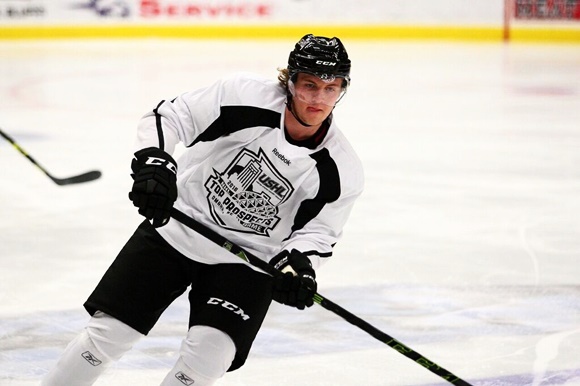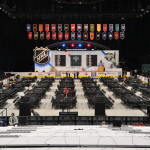 182. RHD Andrew Peski (Tri-City, WHL):
182. RHD Andrew Peski (Tri-City, WHL): Attack-minded blueliner with good size (6’0, 195) who played a critical role in Tri-City’s Clark Cup championship, logging top-four minutes and helping on the power play. He’s a very good skater with speed and solid pivoting ability. Peski is an overager only by a year, and he’s committed to play for North Dakota, where his improvement in one-on-one play and cleaning up the crease will compliment his obvious skills with the puck. He makes smart, well-times plays on the breakout and rarely turns the puck over in his own end. If something is brewing below the circles, he’ll drop down to create another option, but his backward skating is strong enough to where he can recover if the opponent grabs control. Peski is a mature young man who doesn’t complain and does what is asked of him, which helped make the Ontario native one of the CCHL’s top prospects in 2015.
 183. RHD Jordan Sambrook (Erie, OHL):
183. RHD Jordan Sambrook (Erie, OHL): It’s odd that many like to call this raw talent a stay-at-defenseman when his better traits involve offense. Sambrook may resemble a defensive defender based on his size (6’2, 190) and the lack of a “wow” factor, but he played a top-four role with power play time for a talented Otters club that boasted one of the league’s top attacks. He’s a bit inconsistent in how he positions himself and executes the safe plays in his own end, but he seems to make up for it with timely pinches and puck support once the puck is inside the opposing zone. Sambrook is an accurate shooter with an above-average slapper, and he’ll drop down low and away from the crease crowd to maximize the probability of success. He can play mean and physical but is guilty of far too many undisciplined penalties, especially when his team is either trailing or already on the power play. Still, he’s a raw prospect with plenty of time to develop improved techniques, and he still managed to have a good draft-eligible season with a key role for a quality club.
 184. RHD Nolan Reid (Saskatoon, WHL):
184. RHD Nolan Reid (Saskatoon, WHL): Undersized offensive defenseman who plays on Saskatoon’s power play and can be counted on to create scoring chances. He owns a very good shot and a quick release, specifically when he defers to the wrister. Reid doesn’t like to hesitate with the puck on his stick inside the opposing blue line. It’s within his own territory, however, where he comes across as indecisive. He’s proven to clear the puck with smart, subtle chips or leads, but he simply doesn’t do it enough. If the puck isn’t off his stick within two seconds, he’s prone to focus more on avoiding getting crunched by a forechecker rather than take a beating to make a clean play. He looked quite comfortable and unbridled, when paired with top defense prospect Libor Hajek, and the duo seemed as if they were communicating well with one another. Reid’s biggest problem is one-on-one play — he can make life easy for opposing puck carriers by tipping his hand and/or over-committing. These vices are fixable with time, which makes him somewhat of a steal in the late rounds.
 185. C Jeff de Wit (Red Deer, WHL):
185. C Jeff de Wit (Red Deer, WHL): Two-way center who was a victim of the Rebels’ scoring depth. He was relegated to a bottom-six role for most of the season but managed to sneak in time on the power play and penalty kill. Nevertheless, he took to his support role with aplomb, tackling tough assignments and winning critical defensive zone draws in pressure situations. De wit has skill — he’s not a one-trick pony. The Rebels drafted him 14th overall in the 2013 Bantam Draft, and will expect him to take on a bigger role in 2017. At 6’3, 190 pounds, he can fill a variety of roles on either the wing or up the middle, and he’s proven to be a threat on special teams. This kind of versatility in a teenage pivot is exactly what teams should look for in the later rounds, especially when a mobile kid like de Wit can boast a good shot and quick release, and show patience with the puck on his zone entries.
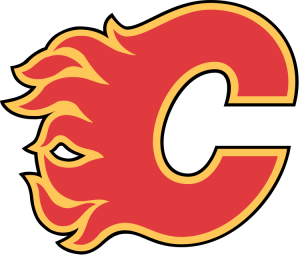 186. RW Zach Walker (U.S. U18, NTDP):
186. RW Zach Walker (U.S. U18, NTDP): Walker is a Boston College-bound depth player who loves to play physical and use his upper-body strength to lean on opponents. He’s a big kid (6’0/200) with excellent speed who can play either wing position and use his strength to rub out bigger players. He’s committed to Boston College where Jerry York will certainly find his size and assertiveness useful, especially around the net when he’s banging and thumping to hold on to his positioning. There are times when Walker’s quickness makes him seem a bit out of control, but he’s one of those momentum-changers who can fill a much-needed role. He owns a average shot with inconsistent accuracy but will do whatever it takes to win his puck battles and at least get into position to fire one off. Walker’s understanding of the game is sufficient considering his depth role, but he produces once it’s expanded. Defensemen have to be cognizant where Walker is at all times or else they run the risk of becoming part of the boards.
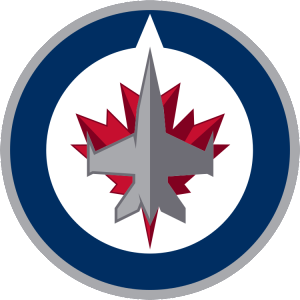 187. C Gustaf Westlund (The Gunnery, HS-CT)
187. C Gustaf Westlund (The Gunnery, HS-CT): Swedish import who was born in Paris but spent the last season honing his hockey skills in the New England prep circuit. He’ll play for Red Berenson at Michigan, who did a fine job developing a similar Swedish player (and current NHL’er) in Carl Hagelin. Westlund has very good speed and quickness with the ability to break free into open ice and outskate backcheckers, but he keeps his head up so he could slow the play down and wait for trailers. He’s very agile with superb edges, and he’ll maintain control of the puck if he has to overstretch his arms to protect it. Westlund is a serious power play option who can thread the needle from the wall or into the slot from behind the net, at times saucering the puck over sticks and skates and laying it flat so his teammate can get a clean shot away. The NCAA schedule will keep him in the gym longer, as he stands at 6’0 but with a listed weight of 165 pounds. He’s excellent on faceoffs, winning over 60 percent of his draws when he centered a line with Alex Nylander and Jesper Bratt for AIK’s J18 club in 2015.
 188. G Joseph Woll (U.S. U18, NTDP):
188. G Joseph Woll (U.S. U18, NTDP): Woll is a Boston College recruit who had the plum job of backstopping the international hockey equivalent of a freight train. He was impressive at the U18 worlds, specifically in a 34-save performance against Sweden and a shutout against Switzerland when the kid made the tough saves with the outcome surprisingly (at one point) in doubt. He’s a classic butterfly netminder with size (6’2, 200) and a well-balanced stance. He follows up shots with reset quickness and net presence, and his quick glove hand is generally in the right position when both static and stretching out. Playing for a strong team like the NTDP means he didn’t have to work hard, but he’s an attentive netminder who doesn’t nap and reacts to plays the right way.
 189. LW Nicholas Caamano (Flint, OHL):
189. LW Nicholas Caamano (Flint, OHL): A very good skater with a long stride who can snipe on the fly, Caamano distinguished himself in an otherwise dreary season for Flint, using quickness and solid reads to create room for himself and convert chances. He is a finisher, using quick hands and a lethal release to beat goalies whether they’re set or not. Caamano is well built (6’1, 188 pounds) for a kid who missed 2017 draft eligibility only by a few days, and his ability to keep the puck close to his body while engaged in tight spaces enables him to wire it, even if it’s in his feet. He can kill penalties and play on the power play, but his vision and puck-sharing skills are average at best. Setting him up with a nice lead or a one-timer is the best way to maximize his abilities, but he’s prone to turnovers and poor choices if he doesn’t fire it right away. The effort is always there, however, as he’ll engage in battles along the wall and slip away from scrums to appear in prime shooting areas.
 *190. (MTL) LHD Matt Cairns (Georgetown, OJHL):
*190. (MTL) LHD Matt Cairns (Georgetown, OJHL): A strong skater with first-step quickness to compliment his NHL-ready frame (6’2, 200 pounds), Cairns is a Cornell-bound two-way defender who is quick to the puck for someone his size. He’s an excellent backwards skater which allows him to make up for any ground he concedes on a pinch or a rush, but he can be creative once inside the offensive zone. Cairns plays with an edge and will deliver an open-ice hit, but he also likes to battle it out and make opponents pay for real estate in front of his goal. Whether he successfully ties up his man is hit or miss – Cairns needs to be more consistent getting between his man and the goal. He plays on the power play and will take chances deep into enemy territory, but he forces cross-ice passes or takes the easy route by dumping it down low. And while his shot is slightly above average and will get it on net most of the time, he comes across as more of a pass-first offensive defenseman. Skating ability aside, we love the fact that Cairns is an on-ice communicator and displays leadership traits.
 191. LHD Keaton Middleton (Saginaw, OHL):
191. LHD Keaton Middleton (Saginaw, OHL): Menacing stay-at-home defender likely to require both patience and instruction if an offensive aspect is desired. Talent evaluators must accept that Middleton rarely puts himself in a position to dictate the tempo of a game on his own terms. The only game-changing aspect we see on a consistent basis is physicality; something we will neither overlook nor deny its importance regardless of whether positional blueliners are deemed trendy or not. He’s the perfect “need” pick for a team lacking a crease clearer. Middleton is one of the draft’s most imposing figures (6’6, 233 pounds), and he uses every inch to jab, slash and mug anybody within an earshot. Size and strength are obvious assets, but he’s also a competitor who will work feverishly to win a one-on-one battle. If there’s a physical confrontation on the ice, Middleton will step and play the Sherrif’s role. His puck skills are average at best, but he is mobile with a long stride, and can unload a heavy shot that unfortunately is not of much importance to him.
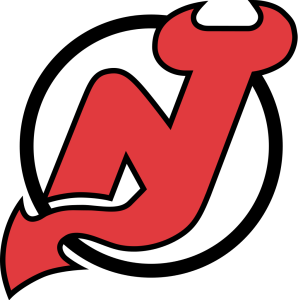 192. LW Jamie Armstrong (Avon Old Farms, HS-CT):
192. LW Jamie Armstrong (Avon Old Farms, HS-CT): Power forward who works hard and possesses enough skill to at least challenge for a top-nine winger at the next level. Armstrong will play for Northeastern and his USHL rights belong to Muskegon, which drafted him in the second round (23rd overall) in the 2014 draft. He’s a strong skater with excellent balance and an aggressive mindset when he doesn’t have the puck, which is quite often since he usually plays with finesse types. Armstrong is the perfect compliment for a pass-first pivot, as he can unload a quick, accurate shot or take the puck right to the net via a power move. He’s one of those prospects who takes what’s given to him and exploits it rather than create an opportunity on his own. Armstrong is a responsible player as well, as he won’t force the puck towards the middle or put his linemates in a vulnerable position by passing into traffic. We won’t go as far as to call him a meat-and-potatoes forward, but his attitude and work ethic makes him an easy choice for a coach looking for a player with the kind of attitude for others to emulate.
 *193. (OTT). C Domenic Commisso (Oshawa, OHL)
*193. (OTT). C Domenic Commisso (Oshawa, OHL): Fast two-way center who produced in bunches after a slow start to his OHL career. Commisso was a true freshman much like fellow Generals pivot Anthony Cirelli was a year ago. The duo provided a rebuilding Oshawa club with consistent second-half production from the center ice position, enabling the Generals to sneak into the postseason. The first thing you notice about him is his effortless breakaway speed. Commisso is a hustler, no doubt, and he’s one of the better backcheckers on his squad. He always seemed to be involved in plays around the next at either end, which reveals a willingness to contribute beyond goals and assists, He’s listed at 5’11, 180 pounds, and the lack of size/strength made him an easy guy to check — as long as you could find him. Commisso has very good vision and always looks for his teammates, sometimes to a fault His shot is good enough to beat a goalie clean, but there are times when he’s simply too cute with the puck on his stick.
 *194. (CAR) LW Brandon Duhaime (Tri-City, USHL):
*194. (CAR) LW Brandon Duhaime (Tri-City, USHL): Overage power winger with a commitment to Providence College and a solid sense of the game, plus terrific puck skills. Duhaime is a three-zone beast who uses his above-average speed and sturdy frame (6’0, 200) to hit whatever is in sight. He’s a tough customer who won’t back down from any challenge, and his array of skills gives coaches an interchangeable weapon for any situation. His footwork, hand-eye coordination and decisions with the puck are at an advanced level, and he can play center if necessary. A native of Parkland, FL, Duhaime’s shot is about average, but he makes up for it with very good puck control and the ability to weave in an around defenders to increase the quality of a scoring chance. He was putting up impressive numbers with the USHL’s Chicago Steel before a trade to Tri-City, where he was a key top-six contributor during its run to the Clark Cup title.
 195. LW C.J. Dodero (Sioux City, USHL):
195. LW C.J. Dodero (Sioux City, USHL): A strapping winger (6’3, 196) with good hands and a powerful stride who is tough to play against. Dodero’s a Colorado-trained stud who can intimidate with his size-skill combination and play an in-your-face style. He recently committed to the University of Denver, where he’ll join an impressive incoming class. His numbers don’t jump off the screen (21 points in 53 games), but Dodero’s was more of a depth player yet finished somewhat strong with seven points in his last 13 games. The Musketeers were one of the USHL’s worst offensive teams, so it was hard for him to get quality minutes ahead of the squad’s established forwards. He possesses a deadly shot and willingness to do whatever it takes to clear a path between the puck and the opposing goal. Dodero is also pretty mobile for a filled-out winger, and he can hit hit the corners while traveling at a high rate of speed.
 196. C Max Gerlach (Medicine Hat, WHL):
196. C Max Gerlach (Medicine Hat, WHL): Burnsville, MN native with Texas ties who surprised the circuit with 30 goals, good for second among all WHL rookies. He’s a speedster with a devastating wrist shot that he can wire rather effortlessly, and he’s one of the better draft-eligible forwards at using a defenseman as a screen before unloading one through his wickets. Gerlach is undersized to say the least (5’8, 165 pounds), and he’s a perimeter player of the highest order. But when you can shoot and scoot the way he can, why bother venturing towards the enemy center of gravity when you can unload from the safety of the flank? Gerlach is capable as a shooter, not so much as a set-up guy. He’s not the least bit physical, and he can’t be counted on once the puck exits the offensive zone aside from winning a neutral zone faceoff.
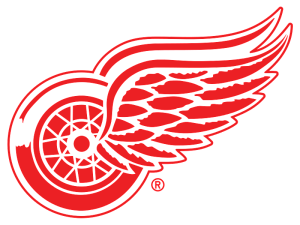 197. C/LW Ludvig Hoff (Chicago, USHL):
197. C/LW Ludvig Hoff (Chicago, USHL): Overage point producer from Norway who is committed to North Dakota following a solid sophomore USHL campaign with Lincoln. Born in 1996, the 6’0, 190-pound Hoff is an exceptional set-up man with the ability to identify multiple options on one shift. He’s a very good skater with a quick burst who uses body language, head fakes and dekes to maneuver defenders out of position and open up passing lanes that he’ll exploit with timeliness and accuracy. Hoff is a sturdy playmaker who will take a hit to complete a play, and will even skate into traffic to draw a double or triple team before slipping the puck to the open man. He is one of the better draft eligibles at using the boards for bank passes, and he doesn’t get rattled if he paints himself into a corner. He has a very good shot and can fire it with accuracy off the pass, and the fact that he will fight to get into the low slot tells us he’s more than just a pass-first option. Hoff played for Norway at the Division IA WJC, where he scored three goals in five games and led the tournament by winning close to 70 percent of his draws.
 198. RW Ivan Kosorenkov (Russia U18, MHL):
198. RW Ivan Kosorenkov (Russia U18, MHL): Dynamic puck magnet who is strong on his skates and can stickhandle his way out of a jam. Kosorenkov is pretty quick on his feet, using exceptional agility and balance to maintain control of the puck. He split the season between MHK Spartak and the Russian U18 team, playing on the top six for each club. Kosorenkov comes across as more of a playmaker than a goal scorer, but he scored a combined 13 goals in 33 games, converting a ridiculous 27 percent of his shots thanks to a quick release and the ability to break the ankles of defenders and he cuts and grooves his way to the cage. Scoring pretty goals is something Kosorenkov is capable of doing, but he doesn’t bogey the tap-ins and slam dunks. He is listed at 6’0, 185 pounds but looks a bit stockier and his skating style is somewhat hunched. Nevertheless, it certainly works for him, as keeping the puck close to his body makes him more difficult to defend. Kosorenkov is physical when he needs to be and will fight for the puck or get in on the forecheck, but his bread and butter clearly is making plays. Knock this kid down, and he’ll get back up.
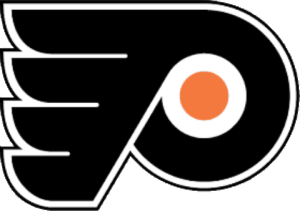 199. LHD Luke McInnis (Youngstown, USHL):
199. LHD Luke McInnis (Youngstown, USHL): Sure-handed mobile defender with NHL bloodlines who spearheaded Youngstown’s attack with speed and playmaking from the blueline. McInnis, whose father Marty was drafted by the New York Islanders in 1988, is an offensive type of defender who skates extremely well and will hang on to the puck as he slices through the neutral zone. He’s not big or physically intimidating (5’10, 167 pounds), but he maximizes his size and reach with sound positioning and an active stick. Defending his position is still a work in progress, however, as McInnis is good with coverage, but is inconsistent with the timing of his pinches and defending against odd-man rushes. Playing aggressive is part of his make-up, and he will flash a move or two to elude an heavy forecheck. McInnis loves to not only join or create a rush, but he’ll chase after his own dump-ins and use the boards to his advantage. He has an average shot but is able to hit his spots, keeping it low if a teammate is in position for a tip-in. He will join Boston College for the 2017-18 season and has a late-July, 1998 birthday.
 200. C Rem Pitlick (Muskegon, USHL):
200. C Rem Pitlick (Muskegon, USHL): The USHL’s top player as an overager who led the circuit in scoring and will play for Don Lucia at Minnesota in the fall of 2017. Pitlick is an excellent skater with shiftiness and escapability who keeps his head up and tends to avoid any major open-ice catastrophes. He bulked up in the offseason after not hearing his name called in Sunrise, but without any impact on his overall speed. He can change direction in the blink of an eye and put himself in a position where he can absorb a hit yet still complete a play. Pitlick has exceptional vision and hockey sense, and he boasts an above-average shot that he doesn’t mind hammering from distances. But he’s far from a fire-and-forget kind of scorer — Pitlick likes to maneuver as close to the goal as possible while maintaining a tight grip on the puck. He can play center or wing, but he is at his best up the middle. At 5’9, 196 pounds, Pitlick has the strength and determination to fight through checks and take a beating along the wall, but he has work to do on the defensive side of things. He did take key draws and killed penalties but was more of an offensive threat than someone you can rely on to shut down an opposing power play.
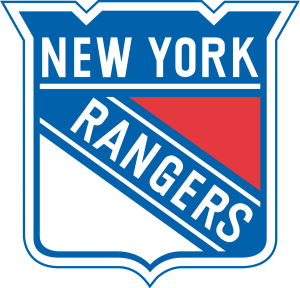 201. C Alex Limoges (Tri-City, USHL):
201. C Alex Limoges (Tri-City, USHL): An engaged skill center with soft hands and a hard, accurate shot who was one of Tri-City’s top players during its Clark Cup run. Limoges likes to compete and will position himself in areas where he knows he’ll pay a stiff price, but he’s also slick enough to take the initial hit and then dart into a better location. He’s not the fleetest of foot, but he makes sharp cuts and turns to buy himself just enough time to make a play, especially on zone entries. At 6’1, 185 pounds, there’s plenty of room to fill out and become more of a physical presence, but he doesn’t shy away from dirty work. Limoges is a Virginia-born playmaker with a commitment to Cornell. He keeps his head up when he’s in control of the puck and can make difficult passes through a dense network of stick blades and skates. Limoges has a quality shot and doesn’t gun it towards the net for the sake of doing so. He is a calculated shooter who will shoot against the grain or shoot low when he sees linemates heading towards the net..
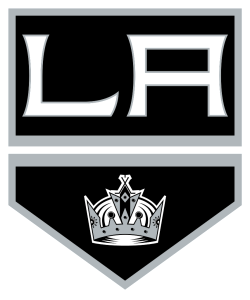 202. LW Egor Babenko (Lethbridge, WHL):
202. LW Egor Babenko (Lethbridge, WHL): Shifty overage playmaker on the smallish side (5’9, 170 pounds) who can dance inside and around traffic to create room for himself or free up others for chances of their own. His skating style is somewhat hunched and choppy, with speed considered to be slightly above average, but his edge work and quick first step makes up for an overall lack of breakaway speed. Babenko is a pass-first winger who likes to hang around the wall and whip loose pucks cross-ice with a decent amount of accuracy. He can control the puck for long periods of time and will cut and spin several times rather throw the puck away. Babenko can fire an above-average shot with accuracy, as he will snipe the corners if the goalie is more concerned with the lower half. He’ll never be confused with anyone who knows their way around the defensive zone, and there are times when he shamelessly cherrypicks. Still, he can take a beating in the offensive zone and has pretty good balance. Babenko, who was born in 1997, can be deadly from behind the net and doesn’t tip his hand of his intentions. He played well in the MHL but left after KHL teams Lada and CSKA fruitlessly battled over rights. The Hurricanes took him 5th overall in the 2015 CHL Import Draft.
 203. C Tanner Laczynski (Chicago, USHL):
203. C Tanner Laczynski (Chicago, USHL): Competitive two-way center who bulked up after being passed over last summer in his first draft look. The future Ohio State Buckeye has a tremendous nose for the net and a generally solid understanding of the game. He takes good routes to the cage and can cause serious problems on the forecheck since his stick is active and in the proper position. He is committed to positionally-sound hockey in his own end, and if he vacates an area on the ice, he’ll either communicate with a teammate beforehand or simply take a calculated risk. Offensively, the tools are all there. He skates well for his size and can unload an accurate shot with a quick release, plus a set of soft hands and strong net awareness. Laczynski looks for teammates and makes nice lead passes, plus he can thread the needle going cross-ice or diagonally. One thing that stands out is that he can dominate a game from wire to wire without ending up on the scoresheet. He doesn’t have any major flaws, and it’s somewhat surprising he didn’t get drafted a year ago.
 *204. (FLA) LW Beck Malenstyn (Calgary, WHL):
*204. (FLA) LW Beck Malenstyn (Calgary, WHL): If real awards were handed out for effort and desire, this power forward would wear out the awards show circuit. Malenstyn is a classic power forward with good speed who would lay out the Zamboni machine if it had an opposing jersey on it. He has a very good shot with a quick release, but he hits the crest far too often. The intangibles are off the charts — his head is always in the game and rarely does he get cheated on a shift. There are no inconsistencies with Malenstyn in terms of effort, and he has the makings of a solid two-way player. There was a point during the season when we felt he was snakebitten, and that may be somewhat true. But the kid has to start burying the quality chances he most certainly earns. At 6’2, 193 pounds, he should be groomed for Calgary’s top six and a look for Team Canada at the summer WJC camp.
 205. G Colton Point (Carleton Place, CCHL):
205. G Colton Point (Carleton Place, CCHL): Colgate-bound behemoth (6’4, 220 pounds) who was one of the CCHL’s top netminders as a first-year draft eligible. He’s a structured backstopper with quickness and an outstanding head for the game, and being as tall as he is allows him to track pucks all the way through. Point is quick to his feet after goal-mouth scrums, and he’s not much of a complainer when he gets run over. His reset ability after the first, even second shot it excellent as both his glove and stick are properly aligned. However, it’s cliché to call a young, big-bodied puck stopper “raw” or a “project”, but that sort of goes without saying for all goalie prospects. Point uses his size to his advantage in all areas except one — his angles while facing the shooter. He tends to be overconfident in thinking his ridiculous size covers everything, when in fact he’s prone to leave a sizeable gap on the slightest of head fakes or dekes.
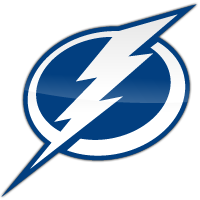
*
206. (DAL) C/LW Samuel Solensky (Liberic U21, Extraliga Jrs): USHL-bound Slovakian skill forward who was one of his nation’s top prospects this past season. He’s undersized (5’9, 170 pounds), but extremely shifty and sharp on his skates. Solensky’s escapability is top notch, and there’s no telling what he’s going to do with the puck once he crosses center. He likes to stop on a dime and change direction before sliding an accurate lead pass to an onrushing linemate. He’s a good skater with improving balance, and he can fire off an accurate wrister while off balance or outstretched. He’s a puck artist who stood out at several high-profile international events, and did carry the offensive load for a thin Slovak roster at the U18’s. Solensky is not just an offensive forward, however, as he killed penalties for both the national team and for his junior club.
 207. RW Grant Jozefek (Lincoln, USHL):
207. RW Grant Jozefek (Lincoln, USHL): New Jersey-born scorer who was one of the Garden State’s top point producers before tearing up the USHL for Lincoln. Jozefek, a late-1997 prospect with a commitment to Northeastern, is a smaller-sized wing (5’10, 185 pounds) who can play in traffic and win puck battles against bigger forwards. He can be an electrifying player who makes opponents pay for their mistakes, especially in open ice. His best assets are his vision and hands – Jozefek will deaden a puck out of mid-air then thread the needle with a perfectly timed head man. He’s an above-average skater with good lateral movement and a quick first step, and he’ll take the puck strong to the net. Jozefek can protect the puck well for somebody without much of a wingspan, and he can wire a heavy and accurate backhander within tight spaces.
 208. LW Daniil Miromanov (Acadie-Bathhurst, QMJHL):
208. LW Daniil Miromanov (Acadie-Bathhurst, QMJHL): Overage Russian sniper with a devastating shot who provided offense despite playing a depth role for more than half the season. Miromanov is crafty and athletic, using a lanky build (6’3, 183 pounds) and long reach to protect the puck and get a ton of velocity on his shot. His speed is slightly above average, and he’s shown to break away from retreating defenders. One thing you’ll notice about him is the way he chips the puck off the boards to himself in order to blow past an opponent in a one-on-one scenario. When the effort’s there, he’s all aces, especially on the power play where he can be used in the low slot or on the wing for a hard one-timer. Miromanov will hit the net under the bar if a goalie is sliding across and targets the short side during two-on-one’s. The biggest concern is effort — he will dazzle you one night, only to disappear the next.
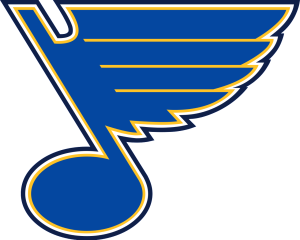 209. RHD Callum Fryer (UMass-Amherst, Hockey East):
209. RHD Callum Fryer (UMass-Amherst, Hockey East): Dependable shutdown rearguard who had the tough job of protecting an turnover-happy group of forwards on an already overmatched squad. Fryer is a double-overager, but that shouldn’t scare anybody away since he was one of the NCAA’s top one-on-one defenders and shot blockers. A 6’3 blueliner with strong footwork, he’s difficult to beat to the outside or outmaneuver. Fryer uses an active stick, and if he’s got you pinned to the boards, the chances of escape are slim. He’s a clean, accurate breakout passer who will take chances with the puck, but only through calculation and analysis. Fryer isn’t a fast skater up ice, but he can backskate rather well and stays within the rulebook when eliminating an opponent on their dump-in. His shot is above-average and he will not hesitate to use it.
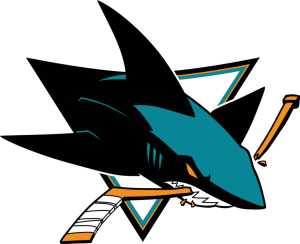 210. RHD Chase Priskie (Quinnipiac, ECAC):
210. RHD Chase Priskie (Quinnipiac, ECAC):Athletic finesse defenseman with mobility and skill who improved game by game as a freshman with a renewed focus on positioning and coverage. Priskie is a double overager (he’ll be 21 in March) from Florida who played for the BCHL’s Salmon Arm Silverbacks before lacing them up for Quinnipiac’s powerhouse NCAA program. He’s one of their top defenseman who helps run the power play and generates chances with an aggressive style designed to make the transition to offense both rapid and lethal. He boasts an outstanding shot and uses his footwork to cut or glide beyond an opponent’s reach in order to get a cleaner look at the cage. Priskie utilizes the slap-pass effectively and can set up a deflection from above the crease area. The biggest knock on Priskie is that he isn’t physical enough, especially when you consider he’s not that small (6’0, 185 pounds). But Priskie’s a disciplined player who is reliable in one-on-one situations and rarely is he turned around or blown past by even the fastest of skaters.
 *211. (PIT) C/RW Vasily Glotov (SKA St. Petersburg, MHL):
*211. (PIT) C/RW Vasily Glotov (SKA St. Petersburg, MHL): Explosive overage scorer with sick hands and a deadly shot who finished fourth in the MHL with 55 points in 42 games. Glotov is lean and wiry (5’11, 160) but owns a tremendous first step and uses his speed and agility to evade physical punishment. He is an absolute hawk on the puck, relentless to the point where he can expend all his energy chasing it down from one end of the rink to the other. Glotov can stickhandle his way through a dicey situation and will attack a wall of defenders with no fear. This can get him into trouble, but he’s no puck hog — Glotov is an excellent passer with keen vision and the ability to no-look a tape-to-tape job. There’s a lot of flash to his game, but it’ll be a while before he’s ready to test his skills against older, tougher players. Pound for pound, he could be one of the draft’s top offensive players, but the prospect of staying in Russia coupled with the small stature makes him better suited for the late rounds..
 *206. (DAL) C/LW Samuel Solensky (Liberic U21, Extraliga Jrs): USHL-bound Slovakian skill forward who was one of his nation’s top prospects this past season. He’s undersized (5’9, 170 pounds), but extremely shifty and sharp on his skates. Solensky’s escapability is top notch, and there’s no telling what he’s going to do with the puck once he crosses center. He likes to stop on a dime and change direction before sliding an accurate lead pass to an onrushing linemate. He’s a good skater with improving balance, and he can fire off an accurate wrister while off balance or outstretched. He’s a puck artist who stood out at several high-profile international events, and did carry the offensive load for a thin Slovak roster at the U18’s. Solensky is not just an offensive forward, however, as he killed penalties for both the national team and for his junior club.
*206. (DAL) C/LW Samuel Solensky (Liberic U21, Extraliga Jrs): USHL-bound Slovakian skill forward who was one of his nation’s top prospects this past season. He’s undersized (5’9, 170 pounds), but extremely shifty and sharp on his skates. Solensky’s escapability is top notch, and there’s no telling what he’s going to do with the puck once he crosses center. He likes to stop on a dime and change direction before sliding an accurate lead pass to an onrushing linemate. He’s a good skater with improving balance, and he can fire off an accurate wrister while off balance or outstretched. He’s a puck artist who stood out at several high-profile international events, and did carry the offensive load for a thin Slovak roster at the U18’s. Solensky is not just an offensive forward, however, as he killed penalties for both the national team and for his junior club. 208. LW Daniil Miromanov (Acadie-Bathhurst, QMJHL): Overage Russian sniper with a devastating shot who provided offense despite playing a depth role for more than half the season. Miromanov is crafty and athletic, using a lanky build (6’3, 183 pounds) and long reach to protect the puck and get a ton of velocity on his shot. His speed is slightly above average, and he’s shown to break away from retreating defenders. One thing you’ll notice about him is the way he chips the puck off the boards to himself in order to blow past an opponent in a one-on-one scenario. When the effort’s there, he’s all aces, especially on the power play where he can be used in the low slot or on the wing for a hard one-timer. Miromanov will hit the net under the bar if a goalie is sliding across and targets the short side during two-on-one’s. The biggest concern is effort — he will dazzle you one night, only to disappear the next.
208. LW Daniil Miromanov (Acadie-Bathhurst, QMJHL): Overage Russian sniper with a devastating shot who provided offense despite playing a depth role for more than half the season. Miromanov is crafty and athletic, using a lanky build (6’3, 183 pounds) and long reach to protect the puck and get a ton of velocity on his shot. His speed is slightly above average, and he’s shown to break away from retreating defenders. One thing you’ll notice about him is the way he chips the puck off the boards to himself in order to blow past an opponent in a one-on-one scenario. When the effort’s there, he’s all aces, especially on the power play where he can be used in the low slot or on the wing for a hard one-timer. Miromanov will hit the net under the bar if a goalie is sliding across and targets the short side during two-on-one’s. The biggest concern is effort — he will dazzle you one night, only to disappear the next.
